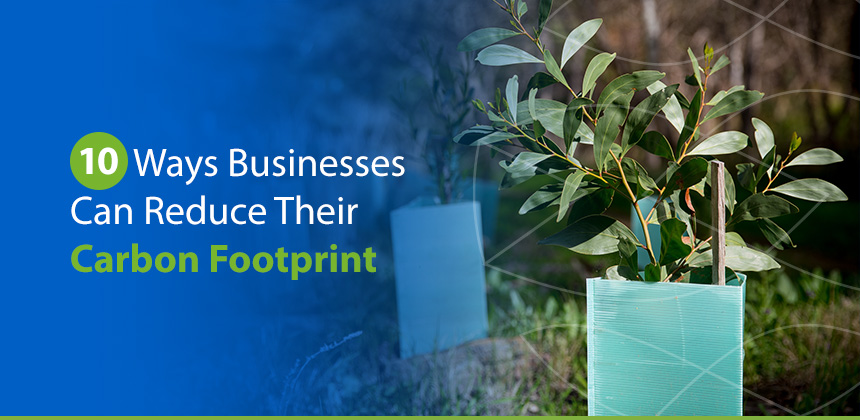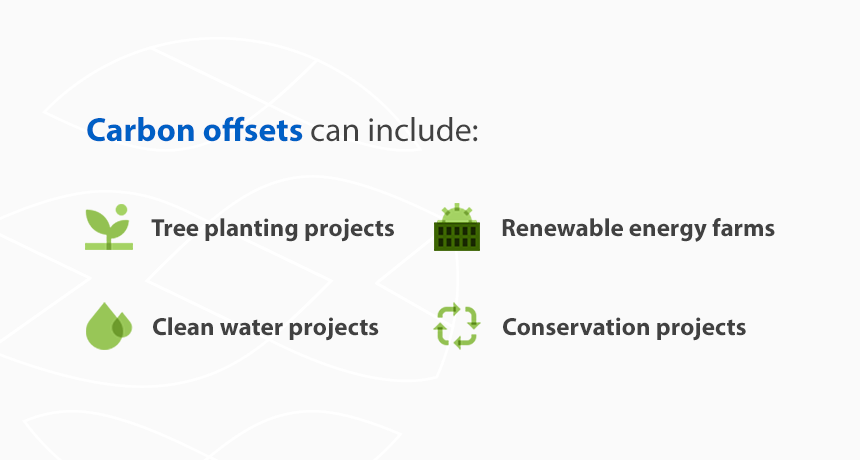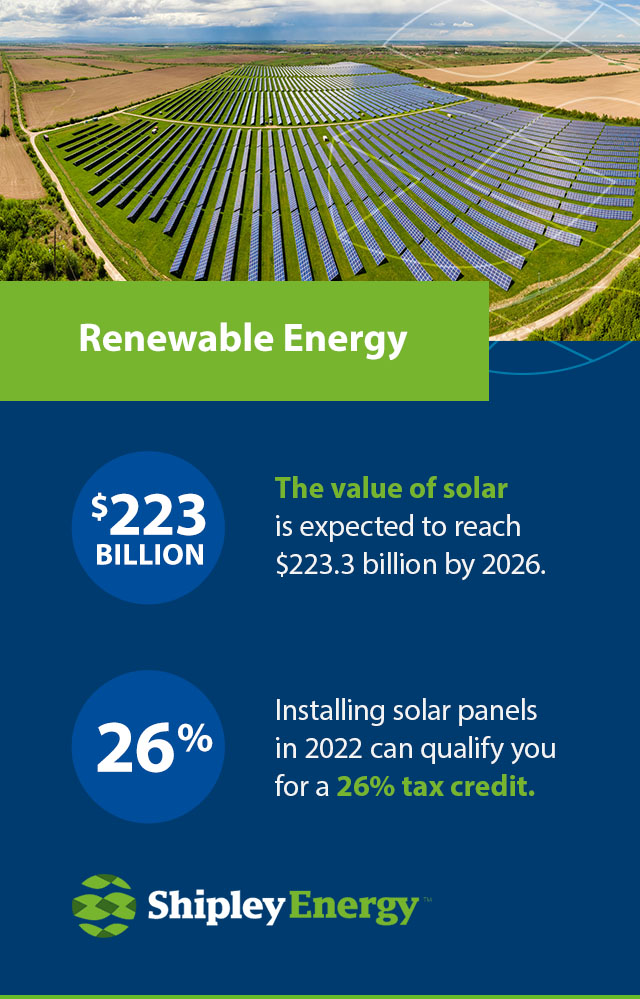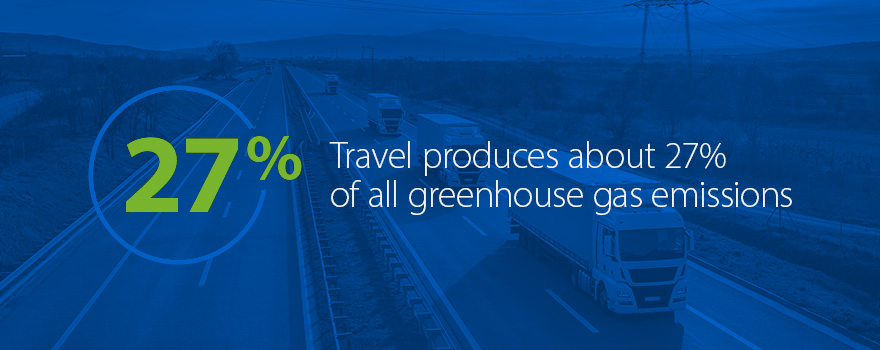

Global warming is a growing concern for businesses and consumers alike. While some CO2 is essential to human life, too much can throw off the balance of the environment and ecosystem.
Reducing your carbon footprint as a business can help limit the excess CO2 in the environment. Continue reading to learn what steps you can take to improve your environmental footprint and commit to renewable energy.
As a business and an individual, it’s essential to reduce your carbon footprint. Reducing emissions improves the public’s health, encourages biodiversity, improves air and water quality and boosts the economy. The following are methods you can use to reduce your carbon footprint as a business.
Measuring your company’s carbon footprint is the first step to helping you reduce your carbon emissions. Many tools are available to businesses to calculate their total CO2 emissions, including what specific activities release the most. A sustainability consulting firm can help you make the necessary changes. They’ll measure your company’s carbon footprint and help you coordinate a plan to decrease it or eliminate it entirely.
Sustainability consulting firms can also:
Regardless of how many renewable energy programs and changes your business adopts, you’re going to produce some CO2 emissions. Carbon offset programs are an excellent way to balance your emissions with the potential to offset your emissions to net-zero.

Purchasing a carbon offset compensates for the emissions you can’t eliminate. The projects funded by your purchase help reduce carbon emissions and can include:
You can use calculators to determine the number of carbon emissions your business produces and the monetary value of these emissions or use a carbon-neutral certification partner.
Once you’ve determined the value of fossil fuel emissions, you can invest in a carbon offset program of equal value. Some of these programs can even be tax-deductible, depending on what company or organization you’re working with.
Remember that these programs don’t reduce the amount of carbon you’re releasing into the environment. They’re just balancing the emissions you can’t eliminate from your business activities. However, participating in these programs proves to your consumers that you’re dedicated to improving your environmental footprint.
These programs won’t make up for years of carbon emissions, so it’s essential to implement other strategies to reduce your environmental impact to reach true neutrality.
The three R’s are one of the most common phrases heard when discussing ways to be environmentally friendly, and businesses can use it as an excellent starting point to reduce their environmental impact. Regardless of what type of business you run, you can apply the three R’s by recycling packaging, reusing office supplies or reducing your paper usage by switching to digital record keeping.
Reducing and reusing should be the first two steps you should make as a business since this can limit the number of materials you need to recycle. Take a look at your current business operations and determine what items or materials you can reduce day-to-day. Paper is an everyday item that you can reduce since companies have many digital options. Switching to digital can also streamline your work and make it easier to locate files or information.
Also, look for items that you can reuse, such as refillable office supplies. You can also reuse boxes for packaging and shipping rather than discard them.
If it’s impossible to reuse some items, you can start a recycling program so these materials don’t end up in a landfill.

Renewable energy is an excellent way to reduce your business’ carbon footprint. Renewable energy helps reduce the impact of CO2 emissions from fossil fuels, which significantly contribute to air pollution.
The market for renewable energy is more expansive than it once was, and businesses have various options to choose from. Solar energy is an excellent option, and the market is bursting, with the value of solar expected to reach $223.3 billion by 2026.
You can invest in solar panels for your business to help offset the use of traditional electricity. Installing solar panels can qualify you for the Solar Investment Tax Credit (ITC), which provides a 26% tax credit to businesses investing in a solar energy system in 2022. By 2023, the tax credit will reduce to 22% and then to 10% by 2024, so it’s essential to invest as soon as possible.
Solar isn’t you’re only option either. Your energy provider might have an existing renewable energy plan available, or there might be a provider who promises that your energy comes from renewable resources.
There are also things you can do around the office to reduce your energy consumption, including:
Wasting electricity can significantly contribute to your carbon emissions, so you’ll want to take precautions to ensure you’re making the most of your energy consumption in the workplace. Different ways you can maximize your energy efficiency include:
Making these changes around the office can help you reduce your carbon footprint while also saving you money. The more efficient your energy consumption is, the less you’ll spend on your monthly utility bill.
You’re not alone in the mission to reduce your greenhouse emissions. Many businesses, big and small, are doing the same thing to make their company stand out against the competition and contribute to a cleaner environment. If you’re a small business, you can partner with another local business or a larger company using sustainable practices to fulfill shipments. Bigger companies can also partner with complementary or small companies for the same purpose.
When you’re buying materials for your business, try to source as much as possible from local vendors to reduce emissions from transportation. If you can’t get your materials from a local company, choose a sustainable supplier to minimize your environmental footprint. Many sustainable suppliers will have a certification that proves that these organizations are dedicated to improving their carbon footprint.
Partnering with other sustainable businesses helps you hold each other accountable in your business practices. Consumers will also appreciate that you’re doing your part to help the environment.
Understanding why it’s essential to reduce your carbon emissions can help you, your employees and your partners make the necessary changes for sustainable practices. Once you understand the benefits of reducing your greenhouse emissions, educating your employees and partners will be easier.
When you talk to your employees about sustainability, provide them with reliable information about the harmful effects of CO2 emissions. Also, provide proof of how reducing your emissions in the workplace positively impacts the environment.
Your employees are a crucial part of your business operations, so getting them on board should be a priority. Your employees can also offer new and innovative ways to reduce your emissions and maximize your energy efficiency. Allowing room for them to voice and implement their ideas also boosts morale among your employees and makes them feel respected and valued.
You can do various things around the office to encourage a greener workplace environment, such as:
You’ll also want to do what your can to educate your partners about sustainability practices. Together, you and your partners can make a significant difference in the environment, and when your partners cut their emissions, it helps reduce your footprint.
Customers are also more likely to respond positively to your business if you implement eco-policies and they’re aware of your efforts to reduce your carbon footprint. According to one study, 78% of consumers were more likely to purchase a product or service if they knew that the company was environmentally friendly.
Additionally, making your customers aware of your sustainability practices can encourage them to adopt some of them at home, reducing emissions even further.

Travel produces about 27% of all greenhouse gas emissions. Reducing your travel emissions can significantly improve your business’s overall emissions. Review your current transportation practices and look for ways that you can improve.
If your business relies on constant transportation, you can reduce your emissions by switching to fuel-efficient vehicles. You can also use renewable fuel, such as biodiesel or renewable diesel. Net zero carbon diesel fuel is another way you can meet your sustainability goals.
If your business isn’t reliant on transportation, you can implement other strategies to reduce travel emissions. You can hold meetings or events online, so employees don’t have to travel long distances. Determine if it’s possible to allow your employees to work from home, even if it’s just an occasional practice. These changes can help you collectively reduce your emissions as a team.
When travel is required, consider using alternative methods of travel, such as:
You can also offer free or discounted public transportation or bike rides to encourage employees to reduce their travel emissions. In places where it’s impossible to use public transportation or too far to bike to work, coordinate with employees to create a carpooling schedule.
Many appliances in your office could be consuming more energy than you realize, especially if they’re older models and haven’t been replaced or upgraded. These old appliances could be driving up your costs and contributing a significant amount to your CO2 emissions.
Take a look at the appliances you’re currently using in the office and determine which can be replaced with an energy-efficient model. While these appliances may cost more at the start, they’ll run more efficiently than the appliances you currently have, reducing the power needed to function and, in turn, your overall cost.
You’ll also want to switch to green refrigerants where possible. Natural refrigerants can perform as well as traditional refrigerants without nearly as many carbon emissions.
The temperature you set on your thermostat can have a lot to do with your carbon emissions since your HVAC system works hard to maintain a steady inside temperature. If you’re turning on the air conditioning in the summer or heating in the winter and leaving it on the same temperature when everyone goes home for the day, you’re using unnecessary energy, raising your utility costs and increasing your carbon footprint.
Turn the thermostat up or down a few degrees depending on the season rather than leaving the AC or heating at the same temperature when everyone leaves. While you’re gone, your HVAC unit won’t have to work as hard to maintain the temperature inside, using less energy and saving you money.
You can also invest in a smart thermostat that will work on a schedule, so you don’t have to adjust the temperature yourself every day. All you have to do is set your desired temperature for a specific time and your HVAC unit will do the work for you. Schedule the thermostat so it adjusts the temperature when you leave and shortly before you arrive.
If you rely on transportation to conduct your business, you’re likely using traditional petroleum, which increases your carbon emissions. The good news is that Shipley Energy offers net zero carbon diesel to help your business reach its sustainability goals.
It’s the same fuel that you’re familiar with, but it is bundled with carbon offsets to reduce your carbon emissions completely. We’ll help you calculate your carbon emissions and research the appropriate carbon offsets to balance your fuel usage. We take care of all the steps, so you don’t have to worry about anything else. Order net zero carbon diesel fuel today or call 1-800-839-1849 to learn more about our services.